Avoid EV Cable Carnage: Tips for Keeping Charging Simple and Safe
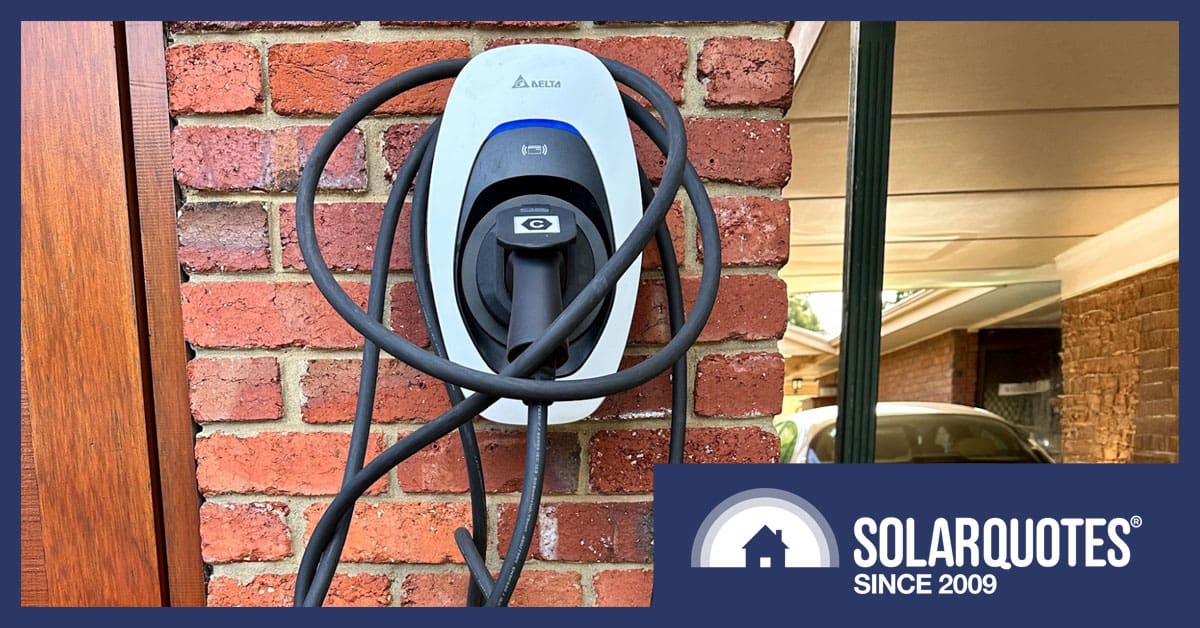
Charging your car involves cables, so we’ve gathered a few hints and really useful tricks for managing the situation without accidentally killing someone.
Cable Organisation Isn’t Hard
EV charging cables are damage-prone. When cars are involved, running them over, cutting, dragging, and kinking is easy.
Electrical flex can easily strike back, though. Trips, falls, twisted ankles and broken belongings are equally as easy when people are involved.
I can speak with authority about people and power cords. When I was at All Covers Rooofing, my job was to save workers from themselves.
As much as people decry tagging and testing, every three months I had to run my hands along 500 metres of extension cords that were invariably sliced open on sharp metal cladding.
The boss laughed at me for tagging the workshop kitchen appliances too, but when I found the sandwich press cord had been toasted, he actually nodded with approval.
There are really only two kinds of people in the world: those who can coil a cable neatly and those who deserve to be hung from the yard arm with their own knotted mess of electrical cords.
Hang Your Cords Up
The simplest way to avoid damage to EV chargers, charging cable, plug end, and the people using it; is to get it up off the floor.
Cable stands still clutter the place
Industry standards and workplace safety laws require extension cords to be suspended off the floor on Australian construction sites. Hooks, clips, brackets, and stands are available for the job, but they are aimed at temporary installations on building sites.

A decent site foreman makes all the difference.
High Wire Acts Are Great
An old car club friend devised this solution for putting a maintenance charger on his Jaguar. It’s simply a clothesline wire strung tight across his shed to support his extension cable. Vale Laurie, your taste in cars and decor was very classy.
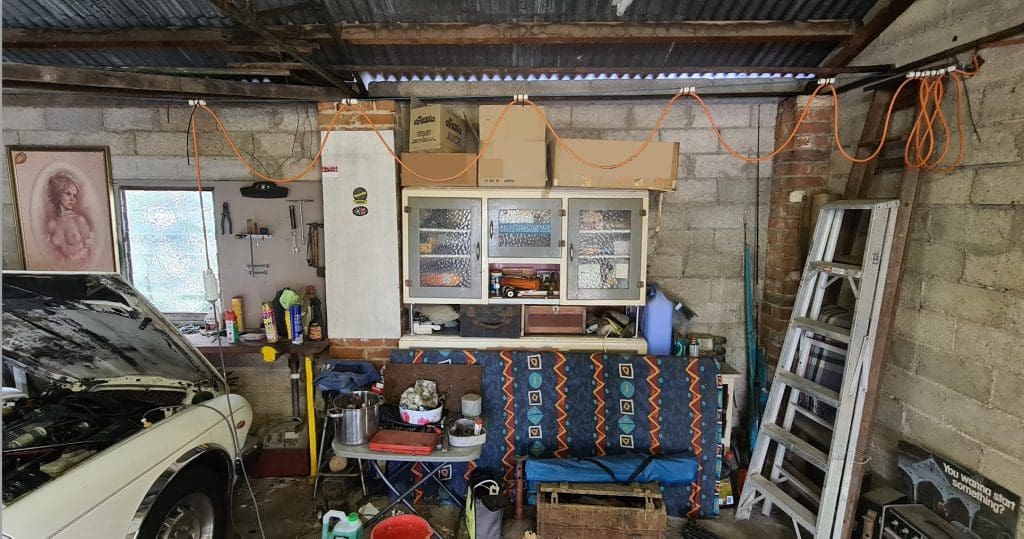
Small pieces of conduit allow the cable to slide nicely along the catenary
For the full “old retired bloke” aesthetic, this really needs a tennis ball suspended in front of the windscreen so you can stop the car in just the right spot. This is something to consider if you have a household solar battery in your garage.

Despite the rest of the clutter, this keeps the cords tidy
Type 1 EV Charging Example
As I have yet to install a “proper” EV charging unit, my approach to EV charging serves two main purposes.
It keeps the EVSE unit out of the rain and stops my lovely wife from hanging the charging plug on the mirror of my ute.
For the sake of the experiment, this unit is connected using an extension cord (white).
However, the excess length in the black charging lead is suspended in a series of loops, with the last drop being short enough that the plug doesn’t hit the ground when it’s removed from the car.

I’ve highlighted the catenary cable in red
I’ve moved the catenary cable now, so it traverses the parking bay diagonally.
If the car is reversed in or we have a different vehicle, I can simply tug the cord across to the opposite corner of the space.
Once I’ve sorted a 10mm² cable from the main switchboard, this carport will likely have a dedicated power point and possibly even a 7kW EV charger.
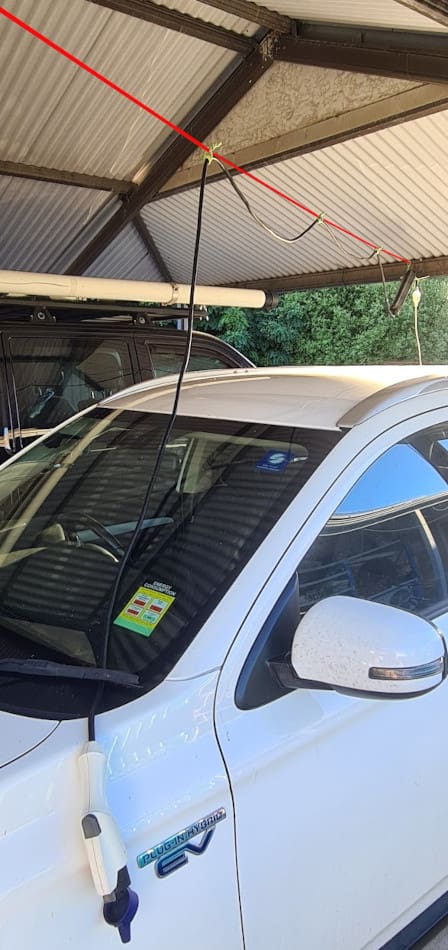
Different EVs have sockets all over them
Catenary Is Electrician Speak For Cable Support
Any electrician will be familiar with a catenary arrangement; the parts are available at any hardware shop.
I created my trackway using plastic-coated steel cable, clamps, and a stout spring leftover from a trampoline.
A turnbuckle may be easier to assemble, but with this lightweight carport structure, there’s some danger of tearing out the screws or bending something if you crank it up too tight.
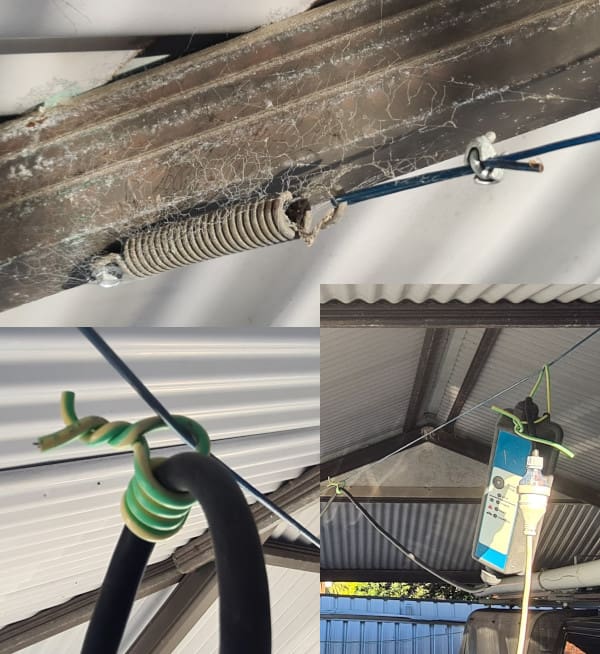
This catenary wire is under a lot of tension, so the bolt holding this spring in place goes all the way through the purlin.
Using what I had to hand meant twitching some infinitely adjustable pieces of plastic-insulated copper wire as cable grips. The main points to observe are that your cable doesn’t move in the supports, but the supports are free to move along the catenary.

These pulleys are a proper industrial solution to a suspended cable, as found on a 4 post car hoist in a workshop
Flexibility Is Handy
If your mates come to visit and you must ensure they have enough charge leave,1 it’s worth bearing in mind the charging cable might need to reach elsewhere.
I always recommend you carry a spare cable in the car just for redundancy, but using some shower curtain hooks on my existing setup would also work well.
Removing the first support or two may be just enough to connect a second car outside without resorting to tools for disassembly.
Fishing Rods Are The Other Option
Don’t laugh; the pedants from Boroondara Council aren’t.
Even though the local authorities didn’t bless this elegant solution, it’s still a perfectly good use for a fishing rod that offers less obstruction to pedestrians, prams and wheel chars than the council parking sign does.

Flexible insulated fibreglass with incremental eyelets, you could hardly ask for a better device to carry a flexible cable
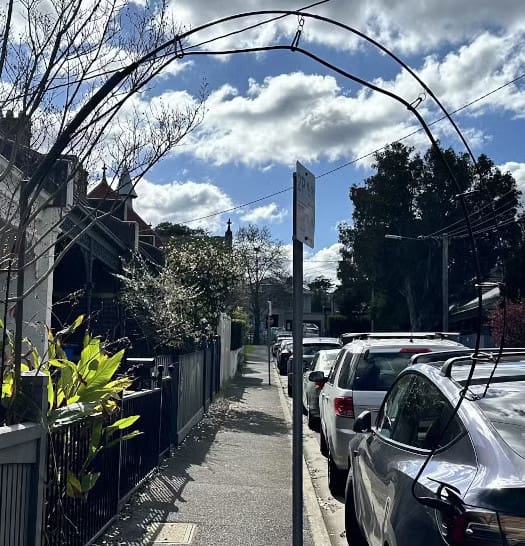
If fishing was any good, they’d call it catching.
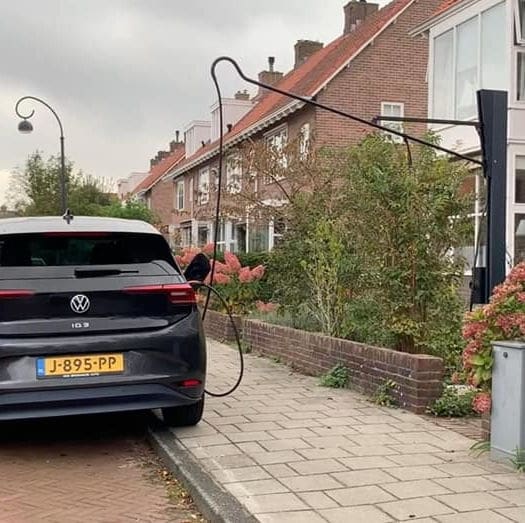
In the UK this is called a “charge arm”
If you’re into god-level DIY projects, then an articulated arm to carry your power, lights and maybe compressed air for tyres is a real showstopper.

I have built one of these because it saves a lot of time rolling extension cords

However the double joint which offers quadruple the flexibility is just gold.
Risk Management Is A Duty Of Care
If your EV is charging quietly in the driveway when someone comes marching up to sell you some unsolicited solar energy, they might trip over the big fat cable lying next to the car.
While I’d argue it serves them right for being a dodgy sales company rep, there’s some chance they could take you to court.
It’s why household insurance has a public liability clause.
It’s a better bet to make your place safe and use a garden hose to drive off the religious callers2 and door-to-door sales reps.
Making them go home dripping wet saves anyone else having to deal with them.
It’s a public service.
Footnotes
- Remember a couple of hours charging on a standard power point costs half that of a tin of beer, we can afford to be generous with this ↩
- True Story: As kids, my best mate would scramble through his grandfather’s house with a kinked-off hose, so the door knockers would be met with a shower of water through the screen door, followed by howls of laughter ↩
Original Source: https://www.solarquotes.com.au/blog/ev-charging-tidy-cables/


















